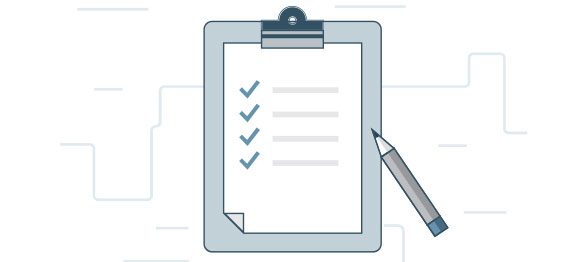Streamlining the content maintenance process
- key point: A content maintenance alert system means better web content with a lower risk of visitor dissatisfaction and complaints
- who will benefit: people who work in large organisations, that are responsible for maintaining large volumes of web content
- effective content strategy: an automated content maintenance alert system should be a key component of any content strategy. Content is a process, not a product, and requires ongoing maintenance.
- key resource: web content publishing process generator

Since reputation and branding is affected by the quality of an organisation’s website, a maintenance alert system is essential for any company with large volumes of web content that requires regular updating.
Web content that is out-of-date or becomes redundant over time will impact how your target market perceives the entire organisation. It is essential that a company website communicates a brand that inspires trust, reliability and expertise.
Maintaining website content should be a key part of an overall content strategy to ensure online channels are working to maximise the user experience and client engagement.
Streamlining the web maintenance process
Ensuring the web content maintenance process is streamlined is something you will be interested in if you or your team is responsible for updating large volumes of website content.
This article examines how you can simplify the process by making the process of website content maintenance more manageable and setting up an alert system.
Document your process of web content publishing
Ideally you'd already have established process of web content publishing - that's already been approved by a senior member of your organisation. If not, you can document your process of web content publishing in minutes using this online tool.
Create your own web publishing process document
How to save time creating your web content publishing process document
How a website content maintenance system can benefit your organisation
Some of the benefits include:
- better content, which means a better website visitor experience
- less risk of customer complaints, particularly legal problems that could arise if content is misleading, and
- a more efficient content publishing system.
Even though there's a lot of up-front setup and testing involved in installing a content maintenance alert system, you will be saving your company time and money in the long term.
How current is the content on your website?

Continual improvement of your website will mean that:
- broken links
- spelling errors and
- other content problems
won't be seen by your visitors.
Automating the process
An enterprise-sized CMS (Content Management System) can be configured to automate the content maintenance alert system. This means that you and your team receive automatic alerts when content is due to be updated. This is particularly important for large organisations, especially financial and business organisations that have an obligation to keep their content accurate for consumers.
Step 1: buy-in from the top
Get buy-in from senior management. If senior management doesn’t agree with introducing a content updating system, then it'll be pretty much impossible to implement.
This article gives you tips on building a strong business case for a new website, and some of the ideas should help you build a business case for a content maintenance alert system.
Having said that, senior management typically would love a maintenance alert system because it means:
- lower costs through improved efficiency
- improved productivity, and
- lower risk.
By lower risk, I mean lower risk of people complaining about content that's out-of-date, incorrect, or misleading. In some situations, inaccurate or misleading content could result in legal problems.
Once you get buy-in from senior management, it’s essential to ask your CEO or General Manager to contact their direct reports to let them know the new system has their approval, and that someone will be in-touch with them shortly to discuss the next steps.
Step 2: planning

Define and document 'who does what'
Once you have buy-in from senior management (in writing) then the planning can begin.
For every piece of content or bundles of content within your website, there will need to be a person, or a position documented that is responsible for the ongoing ‘up-keep’ of that page.
You may need to get your General Manager (GM) and their direct reports to agree on which area of your organisation is responsible for each section of the website. This may take time because the topic will likely cause discussion, but each department will need to have agreed on who does what. Make sure the outcome is recorded in a centralised spreadsheet.
Step 3: a good spreadsheet
Spreadsheets are perfect for these types of situations.
Create a spreadsheet using Google Sheets or Excel; this document will detail
- how often a page needs to be updated
- what area of your organisation is responsible for the content
- the position of the person who is the content matter expert
- the position of the person who is responsible for actually making the updates, and
- the person who will be notified if the update doesn’t occur when it’s meant to.
In regards to the column for escalation, this isn’t about reprimanding anyone. This is more about building a 'safety net' into the system that would initiate when people:
- are on leave
- are sick
- have forgotten to perform their step.
Here is an example of a spreadsheet that you could use as a starting point:
| Page | Org unit responsible for this page | Position of content matter expert | Position of person who edits the webpage | Approver | Frequency of review / update |
|---|---|---|---|---|---|
| About us | Marketing | Head of Marketing |
Marketing Assistant | Head of Marketing | Every 6 months |
| Jobs | Human Resources | HR Manager | HR Assistant |
HR Manager |
Weekly |
You should also document the email address that will be receiving the content maintenance alerts. Remember, shared inboxes are better than email addresses of specific people because over time as people leave the organisation, go on holidays, are off work sick etc. so a shared inbox will act as a safety net to ensure that content is being maintained to a high standard.
Step 4: internal communications
Create an internal communications plan.
It's important that all involved are notified in advance and have an opportunity to come on the journey with you. You’ll need to meet with each group in-order to populate your spreadsheet.
Standard messaging
Create an email template for each piece of internal communication that is sent out. Get it proofed and quality assured before you click the send button by a subject matter expert. If you can get your GM to approve the new template then it’s even better.
Don’t send any messages until you know the technical solution for how you’re going to implement this new alert system.
Step 5: establish the best technical solution

Once you know who is responsible for each area of the website, and how often the pages should be reviewed, then you’ll need to work out the best way to implement the system.
Using the existing company calendar system would suffice but it would be even better if the CMS is configured to support your new content alert system. Ask your digital team if they can help you with this aspect of the project.
Step 6: set up reminders in your CMS
You’ll likely need to get your technical team to implement this for you because it will involve some significant set up in the CMS. Depending on the type of CMS you use, the time it takes to set up this system will vary. I know that Squiz Matrix CMS can support this type of maintenance alert system as my CMS Developer and I have used this for many successful projects we have overseen.
Step 7: email templates
Write a suite of email templates for each of the messages that will be sent at the various stages of the maintenance alert system. Put adequate time and thought into each message because you don’t want the receiver unclear on what they are being asked to do.
For example:
- there should be an initial message giving people a heads-up that content needs to be updated
- there should be a second message if they don't act on the first message, giving them a friendly reminder
- there should be a third message letting them know that because the content is still out of date, the situation will be escalated to their supervisor or manager
- the fourth template would be the message their manager receives
- make sure you put a lot of effort and thought into these messages because they could be the cause of internal friction if they're not written in a clear and concise manner.
Step 8: create internal listing pages

People should be emailed once a month with a list of pages that are, "Up for review". In addition to this, set up pages that only website editors can see (not the public) that lists all of the pages that need to be reviewed. This way people don't have to wait on the emails. They can just look at the pages and note what has been classified as up for review.
The internal listing pages should have direct links to any pages that need updating, and ideally would have the position title of the person who is responsible for reviewing / updating that page. They should also include the date the pages were last updated e.g.:
About us page
- needs to be reviewed every 6 months
- was last reviewed 7 months ago by Jane Doe
- review this page now and if the content is accurate then change the status from “Up for review” to "Approved".
These pages would be a list of all the pages that are marked as needing to be reviewed. They may not actually be out of date, but according to an earlier step, they need to be periodically reviewed, for example every six months to ensure accuracy.
Be sure to make it easy for people to mark pages as “Approved”. When they mark it as approved, a timer would automatically be set for another X amount of months for the next review.
Step 9: configure your Content Management System
After all the internal communications are done and everyone is ‘on the same page’, then it’s time to actually implement the configuration and settings in your CMS.
At a high level the way it would work is:
- after you know how often a page needs to be reviewed for accuracy, then you set a timer on that page so that after X amount of time it gets tagged as ‘Up for review’
- once a page is marked as up for review it will automatically start appearing on an internal listing of pages that need to be reviewed
- when the automatic email is sent out it will only list the pages that are up for review
- set it up so that people can mark it as approved, but make sure who marked it as approved is logged so that there's accountability. Explain to all involved that there will be paper trails in terms of who has approved content
- set up the escalation system so that if a page is still up for review after, say, five business days then it gets escalated to the manager. This is particularly important for when people go on holidays, or when people are sick, or if they have left the organisation. It's important that a fail-safe system is built in so that something actually happens if the required update isn't acted on.
Step 10: set yourself up for success
Test everything before releasing anything to the wider organisation
It's important that you test your system and make sure it's doing everything it's supposed to be doing.
Brief all involved

After you know that your CMS can support your new content review system, start the process of communicating (or selling) the new processes to your colleagues.
Set up in-person meetings with the front-line staff who’ll actually be receiving the reminders, so that you can explain how the system will work.
Quick reminder: it's critical that you already have senior management buy-in or approval before you go into these meetings.
These meetings are important because you’ll need to walk people through the new protocols and make it clear that they will start to get emails when content is due to be updated. This is so they know what to expect and they know what's due when they start receiving these emails.
If you work closely with frontline staff who'll be receiving these messages, then your project or your system will have more chance of success. Definitely don't just start sending emails, or have a situation where people just start receiving multiple emails about content that needs to be updated.
After each meeting, follow up with a confirmation email that details what was discussed and agreed on. If anything was outstanding after the meeting, make it clear who has been assigned a task, and when it’s due.
Remind everyone on the week of launching your new system that there will be a new process in place, or at least a new alert system.
Make sure you monitor the running of your new system, particularly within the first few weeks to make sure that there are no technical problems. More importantly, ensure that there are no internal cultural problems with adapting to this new system. While it's hard to get buy-in for any type of change, a system like this is a change for the better and a massive improvement on no content maintenance system at all.
Wrapping up
Hopefully this article is helpful to you. I’ve spent the majority of my career in large organisations, so I know how systems like this can make one’s working life better.
If you're uncertain about the types of CMS that could effectively integrate a content maintenance alert program, Squiz Matrix CMS has been tried and tested by the team at Polished Pixels for a number of large organisations across the finance, business and higher education sectors.
Each organisation experienced a huge improvement in the quality of web content, improving the user experience while helping to communicate a brand that inspires trust, reliability and expertise.
Learn more about CMS
See how you can implement an Enterprise CMS for your site and view case studies from previous projects.













